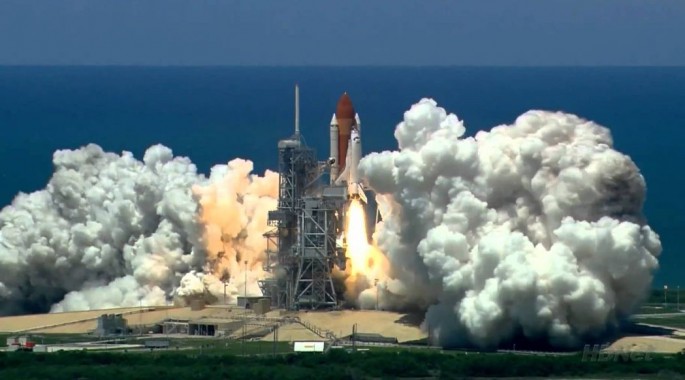Russia has announced the successful test of a liquid-fueled rocket engine powered by next-generation clean fuel.
The Russian Foundation for Advanced Research Projects (FPI), Russia's advanced military research agency tasked with ensuring Russian superiority in defense technology, said the world's first successful test of a full-size rocket fuel demonstrator used a clean oxygen and kerosene mix as its propellant.
"The given results are impressive and unique. We can now firmly admit that ecologically clean rocket fuel is possible, and we made it happen," said Igor Denisov, FPI Deputy Director General.
The test was held by "Detonation LRE," a specialized laboratory founded by FPI in 2014. FPI claims Russia is now the leading country is both rocket engine development and production.
Soviet scientists are said to have first proposed using a detonation combustion system, which is a very efficient thermodynamic combustion method. It took decades for this system to be made practical, however.
"The significance of the test's success for the advanced development of the domestic engine cannot be overestimated. It took us two years to reach this result. This kind of rocket engine is our future," said Vladimir Chvanov, project lead engineer.
Most rocket engines in service today use hydrazine (a hypergolic propellant) as their liquid fuel propellant. Although very energetic and, therefore, powerful, hydrazine is dangerous to use and is extremely toxic to humans. Breathing in a lot of hydrazine will cause pulmonary edema in a person, rendering that person unable to breathe.
Hydrazine combustion also creates massive quantities of soot and carbon. It's because of hydrazine's disadvantages, the Russians, Americans, Europeans and the Chinese are developing their own versions of a clean rocket fuel.
NASA early this year announced it was developing a new, green and less tosic type of rocket fuel called AF-M315E that uses hydroxyl ammonium nitrate instead of hydrazine.
AF-M315E is more efficient more efficient than hydrazine, which means spacecraft will need less of it for the same amount of thrust power. That could mean cheaper launches.
This new fuel will also be safer to handle, and that could help cut production costs. NASA plans to launch an AF-M315E-powered spacecraft in 2017.



























